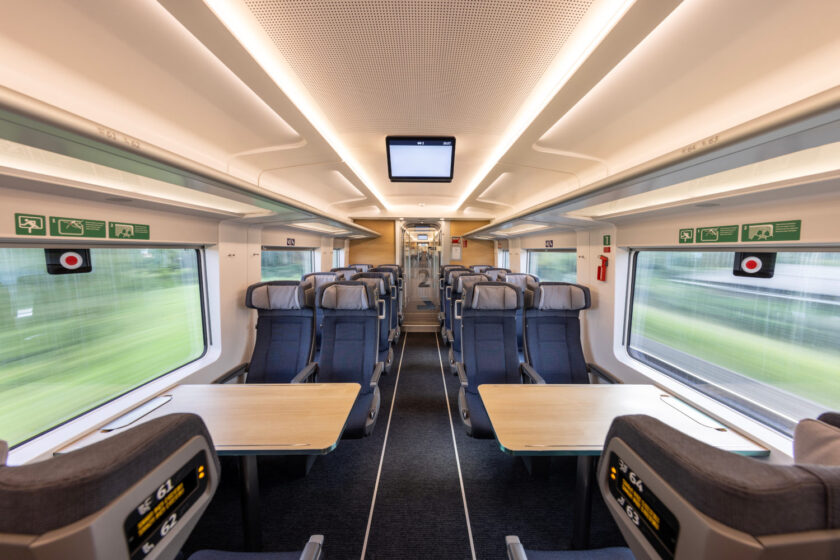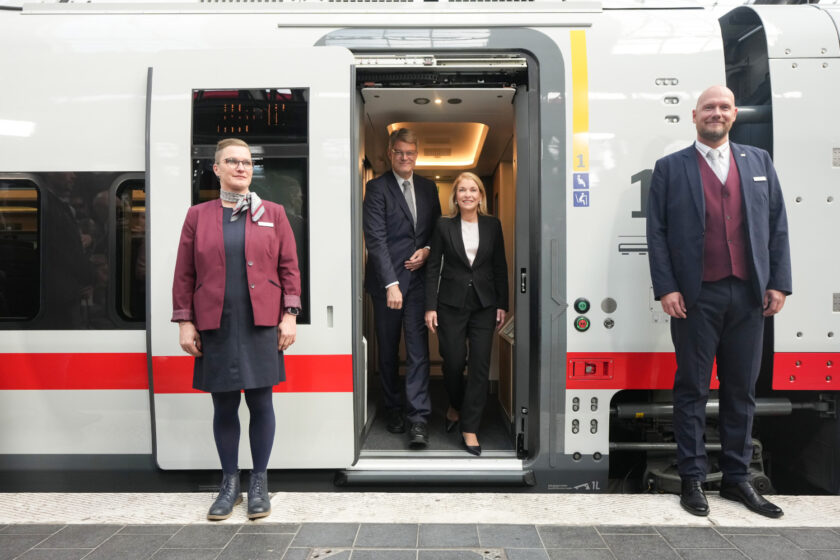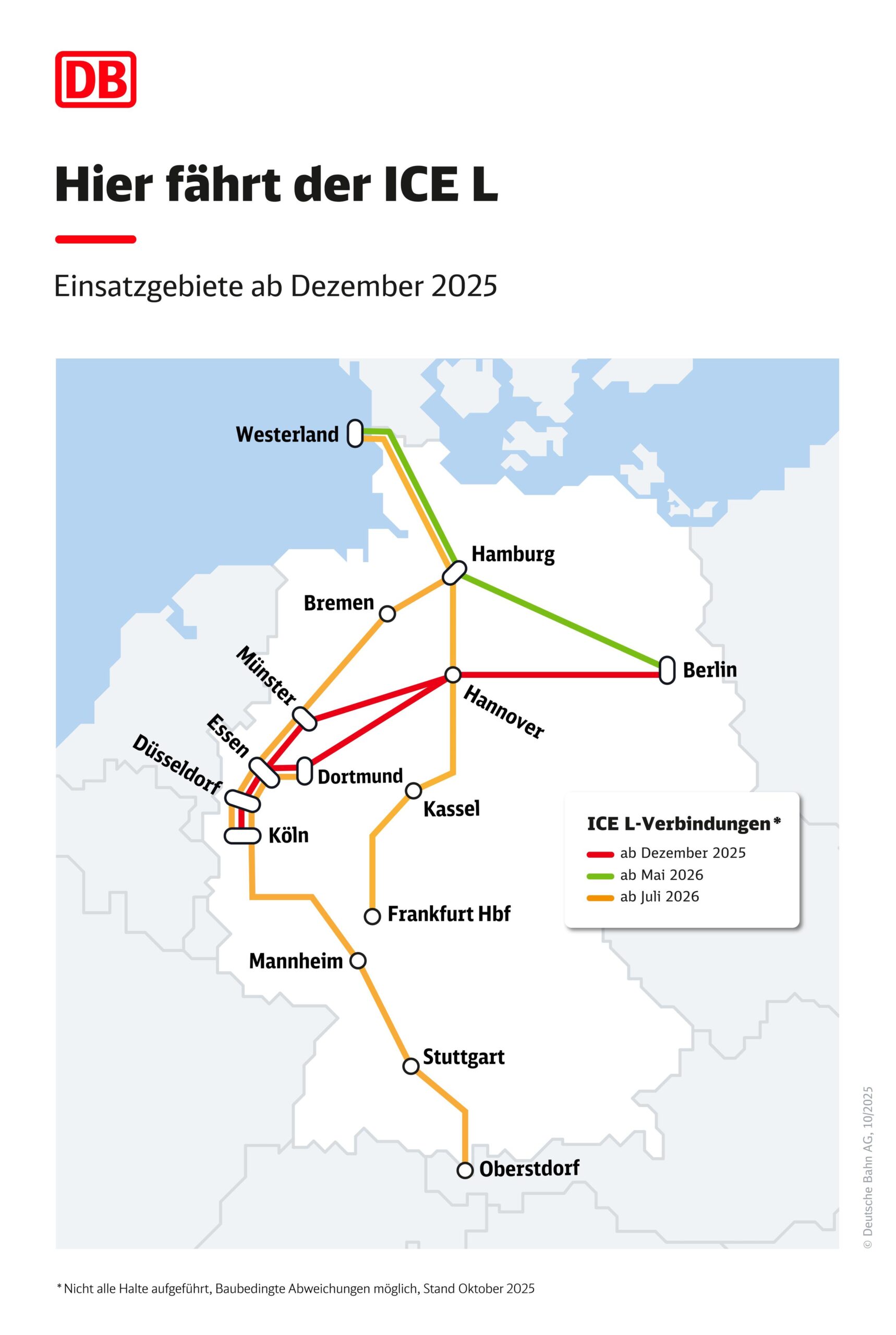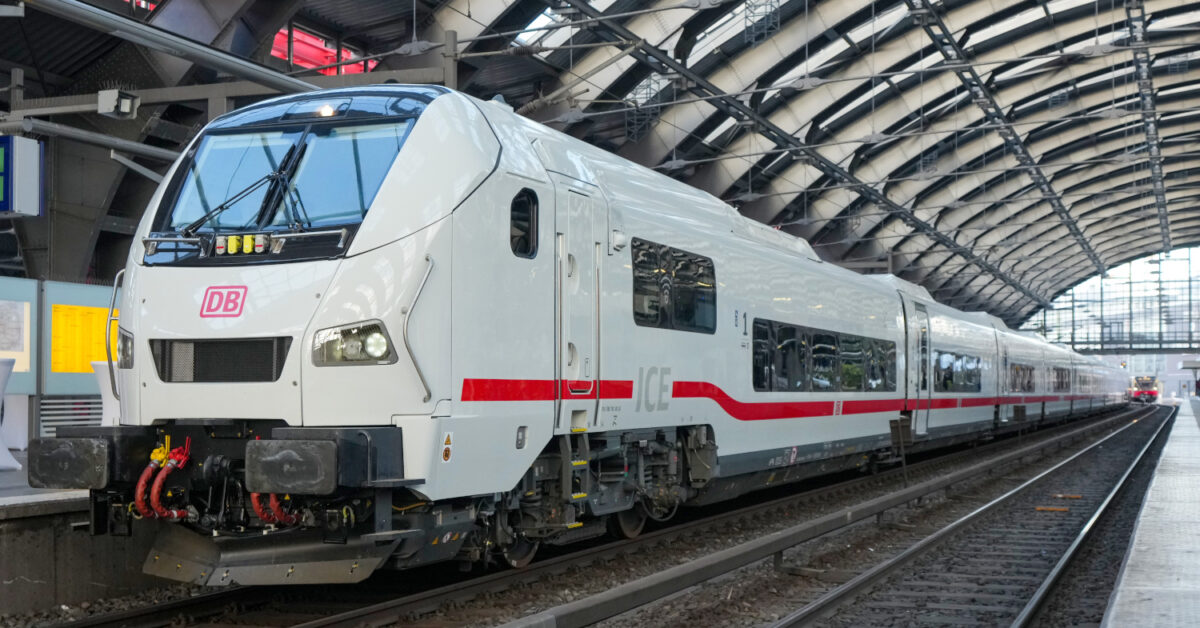German federal public operator, Deutsche Bahn (DB), has presented this morning at Berlin Ostbahnhof station the first German high-speed low-floor train, manufactured in Spain by Talgo.
It is the ICE L, on the Talgo 230 platform, and it is the first ICE not manufactured by Siemens. Moreover, together with the DSB version of the train (homologated a month ago), it is the first Spanish high-speed train to operate in the heart of Europe.
Its purchase was awarded in February 2019 and marked the Spanish manufacturer’s return to Central Europe after a decade of absence.
Trenvista Premium te lleva directo, sin anuncios que hagan descarrilar tu lectura ni tu paciencia.
Únete por sólo 35€ al año, disfruta de contenidos exclusivos, más ventajas y cancela cuando quieras.
★ Empieza ahora
The operator stresses that these new high-speed trains represent a new generation of rolling stock for the company, combining universal accessibility, improved comfort and technology adapted to the current needs of passengers.
It will enter service on 14 December on the Berlin-Cologne route and will gradually be extended to other routes.
A train focused on the passenger experience
The ICE L is the first result of the so-called Agenda for satisfied customers on the rail network. Designed with a focus on comfort, it incorporates step-free doors, new generation seats and windows that allow mobile signal to pass through without the need for repeaters, improving on-board connectivity.
The interior features warmer tones, quality materials and a lighting system that varies according to the time of day.

Each train consists of 16 intermediate cars and one end car with a cab. Although each composition has its own locomotive, the first ones manufactured by Talgo will provisionally run with Siemens Vectron locomotives. For the moment there is no date for the homologation of those manufactured in Spain, which will form the 105 series.
The 256-metre train accommodates 562 seats, the result of a specific development involving more than 1,600 people. Each seat has a power socket, folding table and tablet holder.
| Technical Specifications | |
|---|---|
| Manufacturer | Talgo |
| Operator | Deutsche Bahn |
| Number of coaches | 17 coaches + 1 locomotive |
| Overall length | 256 metres (locomotive: 19.7 m) |
| Coach height | Between 3.6 and 3.8 metres |
| Accessibility | Low-floor throughout (760 mm), level boarding at all doors |
| Seating capacity | 562 seats (477 Standard Class, 85 First Class) |
| PRM spaces | 3 wheelchair spaces with height-adjustable tables |
| Bicycle spaces | 8 per train |
| Baby/family spaces | 9 for babies and up to 46 in the family area |
| Maximum service speed | 230 km/h (considered high-speed when exceeding 200 km/h) |
| Maximum tested speed | 253 km/h during trials |
| Unladen weight | 406 tonnes |
| Number of axles | 24 |
| Traction | Multi-system locomotive, compatible with other electric and diesel units |
| Signalling system | Interoperable across Germany, Austria, the Netherlands, Denmark, and Switzerland |
| Key innovations | Windows permeable to mobile signals, variable lighting, and LED displays at each seat indicating reservation status |
| Sustainability | Ultralight materials (-20% weight per seat compared to other ICE trains) and lower energy consumption |
Innovations also include new standby indicators with coloured LED lights and a spacious 46-seat family compartment, the largest in the entire ICE fleet. The baby-friendly car includes nine seats, more than any other German high-speed model.
The ICE L, an accessible and sustainable train
One of the operator’s highlights is the continuous low-floor design of Talgo trains. This allows access to the interior without any steps along the entire length of the train, something unheard of on the German high-speed network. In addition to allowing access for wheelchairs, it also speeds up the entry and exit of trains.
In addition, cars designed for PRM have wider doors and height-adjustable electric tables for wheelchair passengers.

Talgo’s president, Carlos de Palacio y Oriol, stressed during the presentation that the ICE L “marks the beginning of a new stage in the relationship between Talgo and Deutsche Bahn” and that the Spanish company “will use all its resources to guarantee a reliable and efficient service”.
This is the second time Talgo has supplied rolling stock to the German company. Between 1992 and 1995 it sold seven night service trainsets for the InterCityNight service. They were withdrawn in December 2009 due to the elimination of night trains, the excessive cost of their maintenance and the need to withdraw an entire composition when a car broke down.
Deployment calendar

After their premiere between Berlin and Cologne, the new ICE L trains will replace the Intercity trains on the route between Berlin, Hamburg and Westerland (Sylt) on 1 May 2026. From 11 July, the ICE L will be used in routes from Frankfurt am Main via Gießen and from Cologne via Münster to Sylt, as well as between Dortmund and Oberstdorf.
In subsequent phases, the ICE L will extend its services to Amsterdam, Copenhagen and Vienna, once the necessary approvals have been completed. With this, Deutsche Bahn reinforces its objective of offering more accessible, comfortable and sustainable mobility in the high-speed segment.
